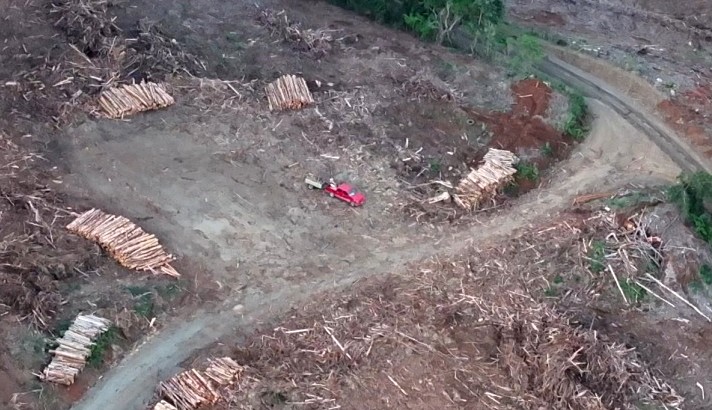Thermoformed Cellulose as a Plastic Replacement: Research Opens Major Opportunities in Circular Economy
A regional FIC project successfully explored the technical and economic feasibility of replacing plastic with cellulose fibers, an initiative that contributes to waste management and the substitution of single-use packaging.
Plastic is known for its resistance, durability, and versatility, serving as the raw material for countless everyday items for decades. At the same time, it has become one of the greatest environmental challenges of modern society. Disposable products like cutlery, cups, plates, bottles, bags, or masks—made from plastic—are used for just a few hours before becoming waste that can take decades or even centuries to degrade in terrestrial or marine environments. There is an urgent need to develop new materials with more recyclable and biodegradable properties.
This is the focus of the Technological Development Unit (UDT) at the University of Concepción, where the circular bioeconomy is understood as a production model leaning toward biodesign, capable of impacting both established companies and adding value to new enterprises.
Growing awareness of this pollution crisis has led to laws banning plastic bags and single-use plastics in recent years, both globally and particularly in Chile. However, given plastic’s prevalence and qualities, research, development, and innovation are essential to finding better alternatives. In this context, UDT proposed the project "Plastic Substitute with Molded Cellulose," selected for the 2021 Regional Innovation Fund for Competitiveness (FIC-R) by the Biobío Regional Government.
Alex Berg, UDT’s executive director, explains that the project aimed to scale up the technology to a pilot level, test the properties of molded cellulose, and preliminarily assess its economic viability. "Plastic must start being replaced. In Chile, each person generates about 52 to 54 kilos of plastic per year, totaling one million tons, with a real post-consumer recycling rate of just 3%. In contrast, Chile’s most effective recycling chain recovers 80% of paper and cardboard. Thermoformed cellulose fits into an already functional recycling chain."
"Today, municipalities face a problem: they are obligated to manage urban waste, which consumes a significant portion of their budget—not due to landfill costs but logistics and transportation. For example, Puerto Montt sends its waste to Los Ángeles, while Greater Concepción’s waste goes to the Copiulemu landfill, which reaches capacity in March. The linear model of buy-use-dispose must change; it can’t continue."
"On the other hand, the Extended Producer Responsibility (EPR) Law is a positive initiative where the state pushes for action, like meeting recycling quotas, following Europe’s example from over 30 years ago. We’re behind, but it’s a great opportunity. There are strong reasons to innovate—not just academically, but strategically. It’s vital for businesses, research, and improving society’s quality of life," says UDT’s director.
The "Plastic Substitute with Molded Cellulose" project focused on developing a new material for the packaging industry, aiming to replace plastic with thermoformed cellulose while matching technical performance and reducing environmental impact. To achieve this, a pilot plant was designed and built, larger product batches were tested, and the technical and economic feasibility of thermoformed cellulose packaging was confirmed.
The research process used virgin and recycled fibers, as well as agricultural-based fibers, creating a suspension molded, pressed, and dried. The resulting products have improved surface aesthetics, enhanced mechanical properties, and broader applications. "The process exists—thermoformed cellulose, unlike conventional molded cellulose (e.g., egg cartons). The plant can produce a wide range of packaging designs," adds Alex Berg.
The project leader highlights key attributes: "This material is bio-based, moving away from fossil fuels like natural gas, oil, or coal, which are unsustainable. Regionally, it’s strategic—we have biomass. Another advantage is its compatibility with existing recycling chains, like cardboard, and its biodegradability if recycling isn’t possible."
"Thanks to the Regional Government and FIC funding, we confirmed the technology’s viability. Molded cellulose is an excellent material. We improved three key properties: water and lipid resistance (crucial for food packaging) and oxygen barrier performance. The results are highly satisfactory, both technically and commercially. This initiative will significantly impact the region—diversifying forestry production (currently limited to few products) while enabling new businesses and jobs."
"As UDT, we aim to keep leading Chile’s technological development in bioeconomy and circular economy. These areas are critical for national progress, and we have much to contribute."

















